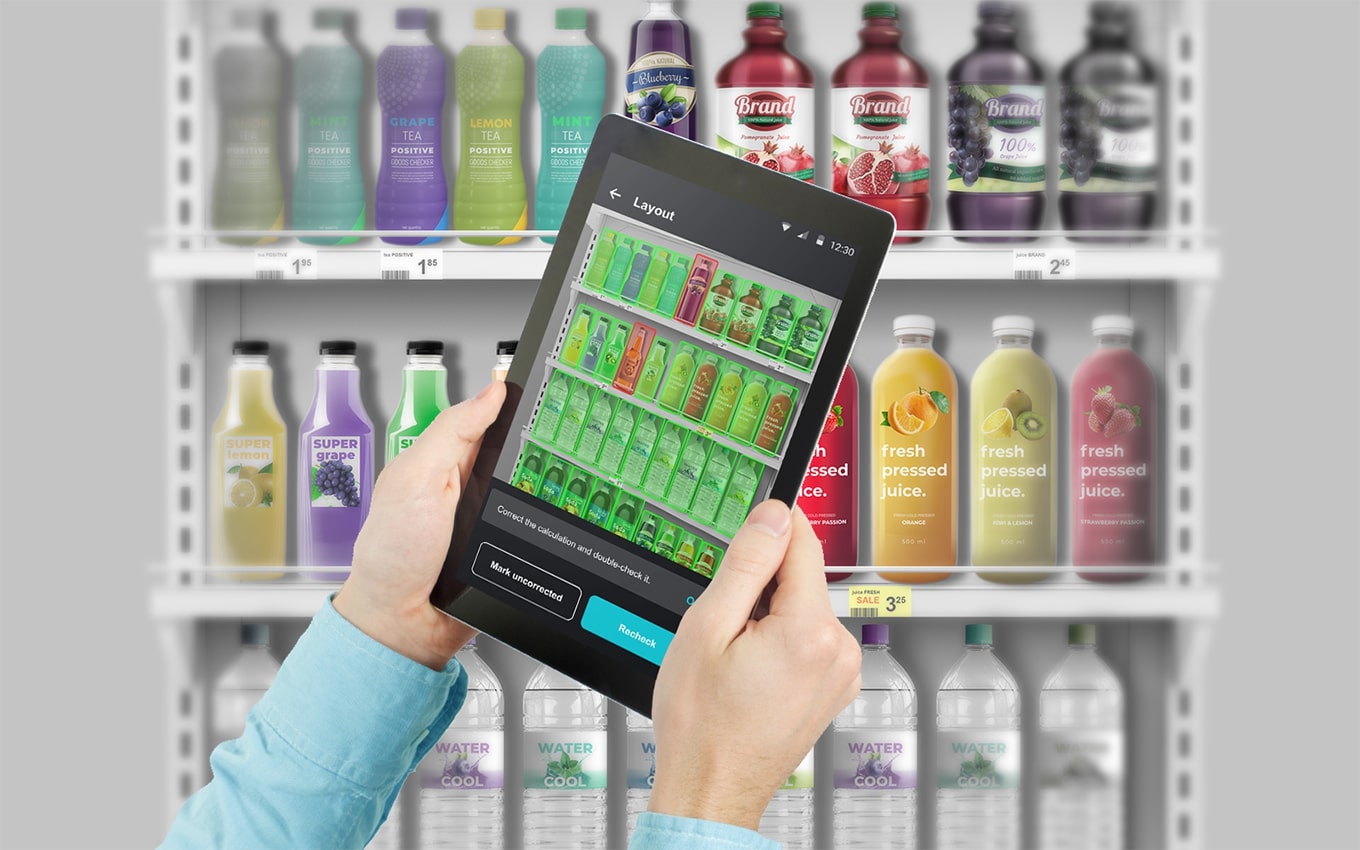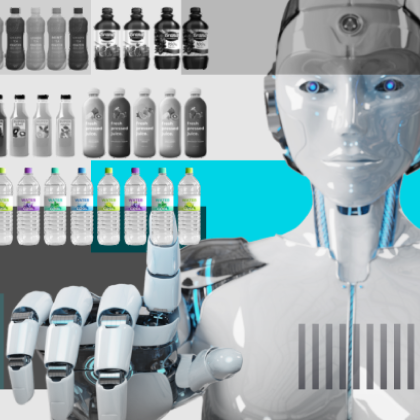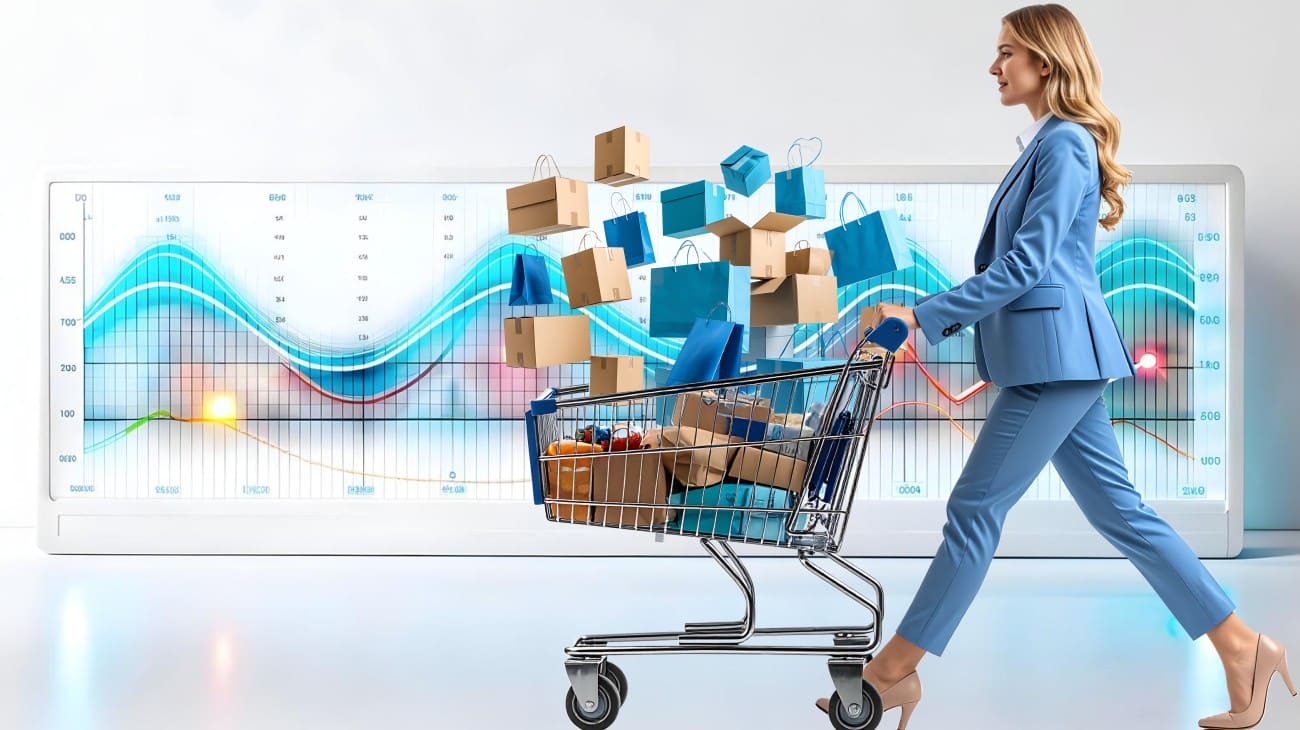The market for computer vision solutions has found its niche amongst global trends, in particular in retail. Neural networks have learned to recover realograms using a photo of shelves with goods, thereby significantly optimizing the processing of planograms and product layout. Computer vision in retail is an indispensable advanced tool that helps to push up sales massively.

How Computer Vision is Used in Retail
Computer vision in retail is able to segment visitors by gender and age, analyze the display of goods not only on individual shelves, but also handle specific product groups.
Store employees track the route and behavior of customers, thus arranging the product mix in such a way that there is an increase in sales of FMCG products. Computer vision can be integrated into the video surveillance system, and the recorded videos can be imported into the software for analysis.
- Functionality of computer vision in sales:
- Artificial intelligence tracks the route of the customer, evaluates it and offers reasonable distribution of groups of goods on the trading floor.
- Determining points of interest. CV systems track the choice of buyers, segmenting them by gender and age. As a result, the software is redefining the merchandising of products by influencing the route of potential customers.
- Identification of equivalent substitutes from available stock in the store. The system recognizes all the goods on the shelves and is able to offer the buyer a substitute.
- AI tracks employee performance. Computer vision captures how well the employee addressed a group of goods, whether the advice to visitors on the trading floor resulted in a purchase.
- Management of shopping lines. It’s not just about portable cash registers and self-service systems. Computer vision captures the length of the line at which the visitor refuses to purchase, while giving a signal when the help of a second checkout operator is required.
- Analysis of product display. The camera captures the location of the product on the shelves, compares it against the planogram and gives recommendations to the merchandiser on moving the product or replenishing it.
CV, combined with artificial intelligence algorithms, assists retailers in automating many of the processes that were previously performed by employees. For example, when a product runs out on a shelf, the software gives a signal, and the merchandiser already knows which shelf needs servicing.
In 2018, Amazon launched the innovative Amazon Go store. It has integrated computer vision system which generates a virtual shopping cart. It identifies not only the point at which the customer takes the goods from the shelf, but also when the goods are returned to their place. Payment is made automatically when leaving the store without any checkout.
Benefits and Best Practices
Many retailers already know how to increase FMCG sales using computer vision. Its benefits are obvious:
- Reduced personnel costs and operational benefits. Employees need a lot of time to manually check the availability of goods on the shelves and their layout according to planograms. Computer vision significantly speeds up the merchandising process, identifying any flaws instantly. Saved time can be spent on other tasks.
- Data collection. The CV system does not just capture the current “picture”, it gives an understanding of the entire sales process and offers best recommendations for improving the trading floor that affect FMCG profits.
- Improvement in quality. The computer vision system always strives for ideal — it will remind you that the product is in the wrong place until there is order on the shelves.
According to US platform Chooch, retail stores are using computer vision strategies to overcome retail pain points and get a significant return on their AI investments.
A good example of computer vision implementation in retail is the Snap.Find.Shop service running in the Neiman Marcus department store application. The software recognizes the image uploaded by the customer and selects a similar product among all products in the retail chain. This approach increased the company’s quarterly revenue by 6.2%.
Layout Analysis: Computer Vision vs Human
Systematization and image recognition is the main task of computer vision.
It is enough to show the child a cube and a ball several times so that he learns to distinguish them. Neural networks follow the same principle. “Vision” processes pictures, identifies similar features, sets keypoints, connects them in lines and determines with great accuracy what kind of object or person is in front of the camera.
Just a couple of hundred photos and two hours of time are enough for the CV system to be trained for a group of products.
Difficulties that a recognition system in computer vision may have:
- A huge number of products and categories that it needs to be able to recognize. The growth in sales of FMCG products largely depends on the ability of neural networks to process planograms and a wide product mix.
- There can be about 100 different products in each photo.
- Sometimes it is impossible to take a photo of a rack in one shot, so AI must be able to determine that the picture shows only a part of the shelves from the planogram.
- Poor image quality due to lighting, glare or other factors.
- Photos at a high angle; it is not always possible to take a “frontal” picture, which interferes with data analysis.
- Overlapping of goods, and sometimes the goods are back to back.
- Products on the lower shelves are in the shade.
- Non-standard structures of shelving.
Computer vision has become so “trained” in merchandising that it can easily replace a human. It is able to reduce the shortcomings of the human factor, when the employee failed to see or notice something, or missed something. It gives prompts when a product is running out or is in the wrong place indicated in the planogram. In addition, if a camera with intermittent recording is used, then the shelves monitoring will be ensured around the clock, and not only when the merchandiser visits the outlet according to the schedule.
How Goods Checker can affect your company's profit
Computer vision in sales starts to hold dominant position among modern systems.
The Goods Checker ecosystem can take care of merchandising automation. It not only monitors the operations of employees, but also uses computer vision to help an FMCG company increase profits by analyzing the display of goods and handling of SKUs.
Computer vision recognizes the products on the shelf and sends a report to the manager. The manager, in turn, decides whether to add the product or replace it with another. The manager can observe the merchandise shelves in real time mode and monitor compliance with the layout and the availability of goods. It is important to understand that the absence of SKUs on the shelves results in a lack of sales.
Regular monitoring using computer vision helps to determine the actual demand for specific groups or units of goods. The manager, having received the information, may decide on the volume of supplies to the store. At the same time, customers of this retail chain will always know that they will definitely find their favorite product on the shelf.
The use of the Goods Checker ecosystem allows retailers to increase the revenue and profit of an FMCG company due to the fact that merchandising is automated, the layout always corresponds to planograms, and the availability of goods on the shelves is monitored on a real time basis.




